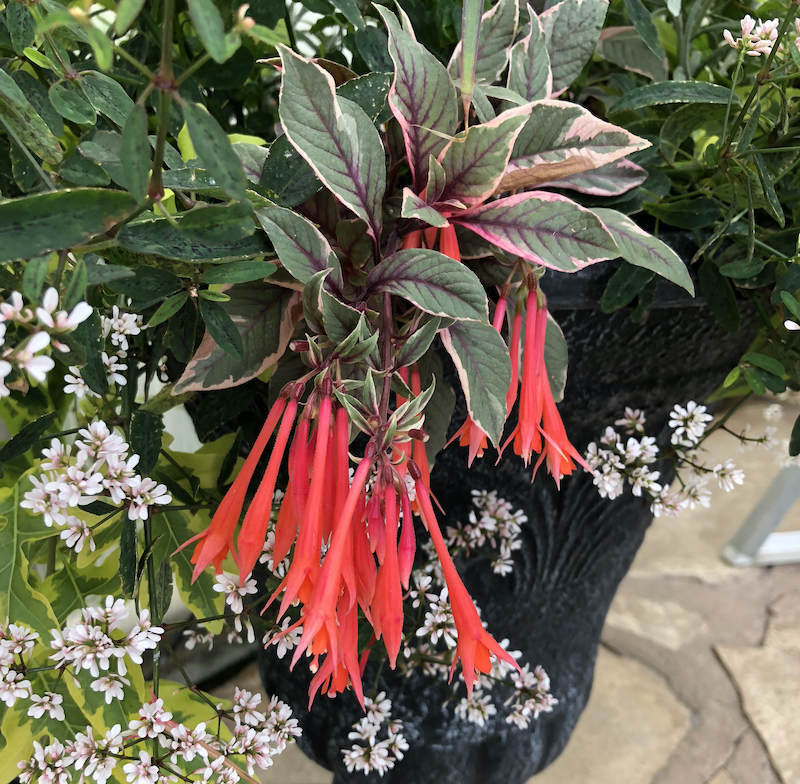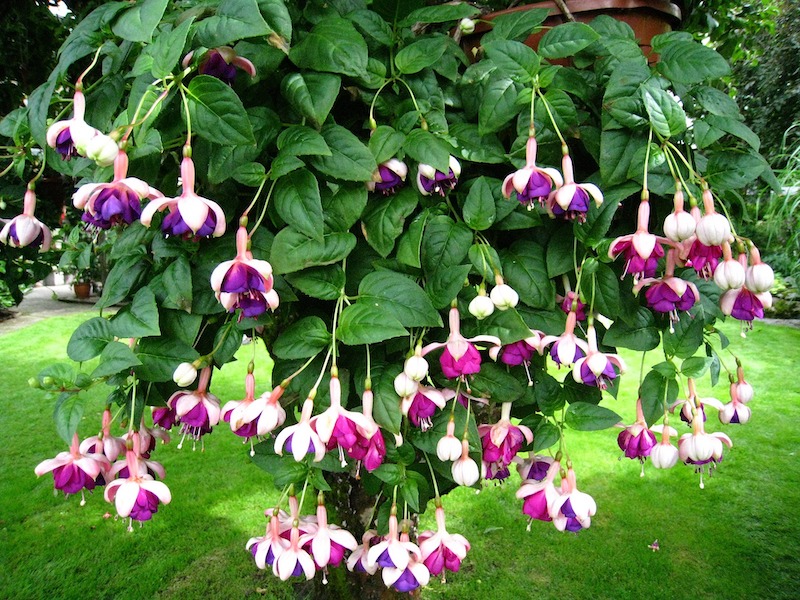Fuchsia is often grown in pots and hanging baskets as an annual plant. Watering containers leaches nutrients out of the soil, so the gardener needs to replace them each growing season. The same fertilizer formulation can be used all season. Regular fertilizing will promote healthy, dense foliage and strong root development.

How to Fertilize Fuchsia
Fuchsia prefers rich soil with neutral pH. Hardy fuchsias can grow year-round outdoors in zones as low as 6. Planted in the ground, these fuchsias appreciate annual mulching with organic compost and shredded leaves in the fall. The combination of nutrients from these sources slowly feeds the plant and enriches the soil.
Diluted liquid formulations are preferred for potted Fuchsias. Liquid feeds are easy to apply during regular watering sessions and are fast acting, giving the plants an almost instant boost. Slow-release, granular formulations are convenient to use as the new foliage emerges at the beginning of the season. Reapplication every month keeps perennial Fuchsias blooming well.

Best Time To Fertilize Fuchsia
Fuchsias need to be regularly fed throughout the growing season. Container-grown plants should be fed every two weeks with a liquid formula. Landscape plants should be fertilized on a monthly basis with a granular bloom formula. All fertilizing can stop in late August or after the hottest part of the summer. This gives the plant time to harden off before cold weather arrives.
Best Fertilizer For Fuchsia
The best fertilizer for Fuchsia will have a higher phosphorus and potassium content to support flower and root development. Look for products explicitly marketed for flowering plants, fruiting plants, or even tomatoes. We love Fox Farm Big Bloom and Espoma Organic Flower-tone 3-4-5 Natural & Organic Plant Food for both annual and perennial Fuchsias.
Fuchsia Fertilizing Tips
- Consistent feedings will help Fuchsia bloom from early summer to late fall
- Fertilizers for roses or tomato plants are good for supporting flower and root development
- Use a diluted liquid feed for container-grown plants and a granular feed for garden-grown Fuchsia
- Regular mulching with organic compost and shredded leaves enriches the soil and slowly releases nutrients throughout the growing season
Warnings
-Always wear protective gloves and a face mask when handling chemical fertilizers.
-Closely follow all directions and storage guidelines that are on the fertilizer label.
 |
Author Robbin Small - Published 9-16-2022 |
